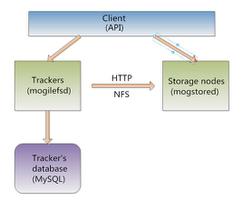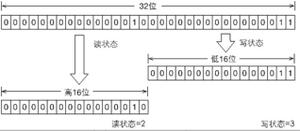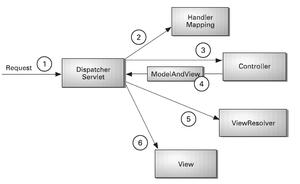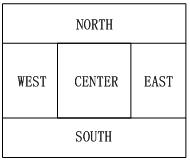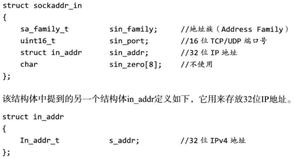RedisEXPIREkeyseconds(rediskey过期详解)

The timeout will only be cleared by commands that delete or overwrite the contents of the key, including DEL, SET, GETSET and all the *STORE commands.(del, set, getset这些命令会改变一个key的过期时间) This means that all the operations that conceptually alter the value stored at the key without replacing it with a new one will leave the timeout untouched. For instance, incrementing the value of a key with INCR, pushing a new value into a list with LPUSH, or altering the field value of a hash with HSET are all operations that will leave the timeout untouched.(但是incr, lpush, hset不会改变过期时间)
The timeout can also be cleared, turning the key back into a persistent key, using the PERSIST command.(如果用persist命令也能改变某个key的过期时间)
If a key is renamed with RENAME, the associated time to live is transferred to the new key name.(使用rename则不会,比如a有过期时间,你rename a b,即把a改名为b,那么b会继承a的一切,就好像你小时候叫二狗子,现在叫李云飞一样,你还是你)
If a key is overwritten by RENAME, like in the case of an existing key Key_A that is overwritten by a call like RENAME Key_B Key_A, it does not matter if the original Key_A had a timeout associated or not, the new key Key_A will inherit all the characteristics of Key_B.
Note that calling EXPIRE/PEXPIRE with a non-positive timeout or EXPIREAT/PEXPIREAT with a time in the past will result in the key being deleted rather than expired (accordingly, the emitted key event will be del, not expired).
Refreshing expires
It is possible to call EXPIRE using as argument a key that already has an existing expire set. In this case the time to live of a key is updated to the new value. There are many useful applications for this, an example is documented in the Navigation session pattern section below.
Differences in Redis prior 2.1.3
In Redis versions prior 2.1.3 altering a key with an expire set using a command altering its value had the effect of removing the key entirely. This semantics was needed because of limitations in the replication layer that are now fixed.
EXPIRE would return 0 and not alter the timeout for a key with a timeout set.
Return value
Integer reply, specifically:
1if the timeout was set.0ifkeydoes not exist.
Examples
redis>
SET mykey "Hello"
"OK"
redis>
EXPIRE mykey 10
(integer) 1
redis>
TTL mykey
(integer) 10
redis>
SET mykey "Hello World"
"OK"
redis>
TTL mykey
(integer) -1
redis>
Pattern: Navigation session
Imagine you have a web service and you are interested in the latest N pages recently visited by your users, such that each adjacent page view was not performed more than 60 seconds after the previous. Conceptually you may consider this set of page views as a Navigation session of your user, that may contain interesting information about what kind of products he or she is looking for currently, so that you can recommend related products.
You can easily model this pattern in Redis using the following strategy: every time the user does a page view you call the following commands:
MULTIRPUSH pagewviews.user:<userid> http://.....
EXPIRE pagewviews.user:<userid> 60
EXEC
If the user will be idle more than 60 seconds, the key will be deleted and only subsequent page views that have less than 60 seconds of difference will be recorded.
This pattern is easily modified to use counters using INCR instead of lists using RPUSH.
Appendix: Redis expires
Keys with an expire
Normally Redis keys are created without an associated time to live. The key will simply live forever, unless it is removed by the user in an explicit way, for instance using the DEL command.
The EXPIRE family of commands is able to associate an expire to a given key, at the cost of some additional memory used by the key. When a key has an expire set, Redis will make sure to remove the key when the specified amount of time elapsed.
The key time to live can be updated or entirely removed using the EXPIRE and PERSIST command (or other strictly related commands).
Expire accuracy
In Redis 2.4 the expire might not be pin-point accurate, and it could be between zero to one seconds out.
Since Redis 2.6 the expire error is from 0 to 1 milliseconds.
Expires and persistence
Keys expiring information is stored as absolute Unix timestamps (in milliseconds in case of Redis version 2.6 or greater). This means that the time is flowing even when the Redis instance is not active.
For expires to work well, the computer time must be taken stable. If you move an RDB file from two computers with a big desync in their clocks, funny things may happen (like all the keys loaded to be expired at loading time).
Even running instances will always check the computer clock, so for instance if you set a key with a time to live of 1000 seconds, and then set your computer time 2000 seconds in the future, the key will be expired immediately, instead of lasting for 1000 seconds.
How Redis expires keys(redis的过期操作到底是如何进行的)
Redis keys are expired in two ways: a passive way, and an active way.(两种方式,一被动,二主动)
A key is passively expired simply when some client tries to access it, and the key is found to be timed out.(当有客户端访问某个key时,而服务器在调取这个key时发现它过期了,这叫被动)
Of course this is not enough as there are expired keys that will never be accessed again. These keys should be expired anyway, so periodically Redis tests a few keys at random among keys with an expire set. All the keys that are already expired are deleted from the keyspace.(当然,仅靠这种被动访问检测的机制是不够的,因为有些key永远不会再被访问,那它就永远留在那了吗?固然不行,这时就需要主动去巡逻那些拥有过期时间的key了,一旦发现有key过期,就立即删除它)
Specifically this is what Redis does 10 times per second:(一秒巡逻十趟)
- Test 20 random keys from the set of keys with an associated expire.(随机抽20个有过期时间的key)
- Delete all the keys found expired.(一旦发现到期,删除它)
- If more than 25% of keys were expired, start again from step 1.(一旦超过25%的被抽查对象已经过期,goto第一步)
This is a trivial probabilistic algorithm, basically the assumption is that our sample is representative of the whole key space, and we continue to expire until the percentage of keys that are likely to be expired is under 25%
This means that at any given moment the maximum amount of keys already expired that are using memory is at max equal to max amount of write operations per second divided by 4.
How expires are handled in the replication link and AOF file (过期操作在副本及 AOF 文件里是怎么做的)
In order to obtain a correct behavior without sacrificing consistency, when a key expires, a DEL operation is synthesized in both the AOF file and gains all the attached replicas nodes. This way the expiration process is centralized in the master instance, and there is no chance of consistency errors.(在aof 文件里追加一行del命令,同样的把这个命令发给副本)
However while the replicas connected to a master will not expire keys independently (but will wait for the DEL coming from the master), they"ll still take the full state of the expires existing in the dataset, so when a replica is elected to master it will be able to expire the keys independently, fully acting as a master.(副本不会自己删除过期数据,只等主节点的命令)
以上是 RedisEXPIREkeyseconds(rediskey过期详解) 的全部内容, 来源链接: utcz.com/z/514253.html


